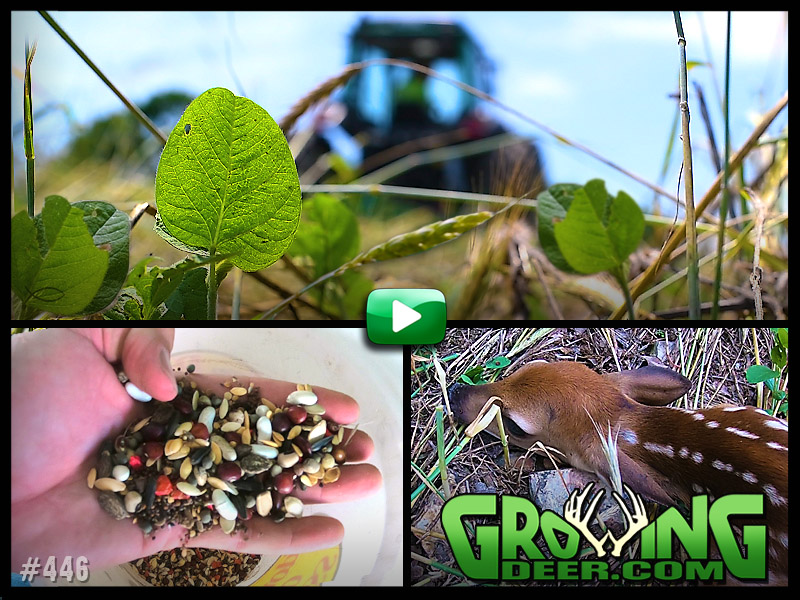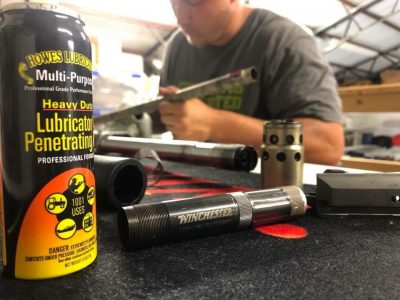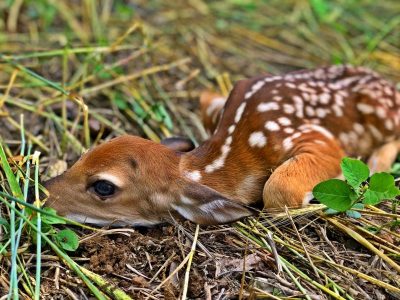Category: Food Plots
How to Plant Spring Food Plots: Live Q & A, Discussion
Questions about how to plant spring food plots? Grant held a Facebook live event where he shared what we are doing here at the Proving Grounds and answered viewer questions to help them plan their spring planting and improve their food plots…plus a few other questions related to deer and turkey hunting! Click below to watch the event!
Why Fence Forage? Save It Now for Hunting Later!
We recently put up a Hot Zone Deer exclosure. This is a solar-powered two-layer electric fence that excludes deer from quality forage. We put this fence in a food plot we call Second House to exclude deer from browsing on some recently planted Eagle Seed forage soybeans.
Some folks ask why I would plant a food plot and then keep deer from feeding on a portion of it. The answer is simple. This technique creates great hunting opportunities. Deer are often very comfortable feeding in a small-sized plot. If the forage planted in the plot is very palatable to deer, they can limit its production or even consume all the forage before hunting season.
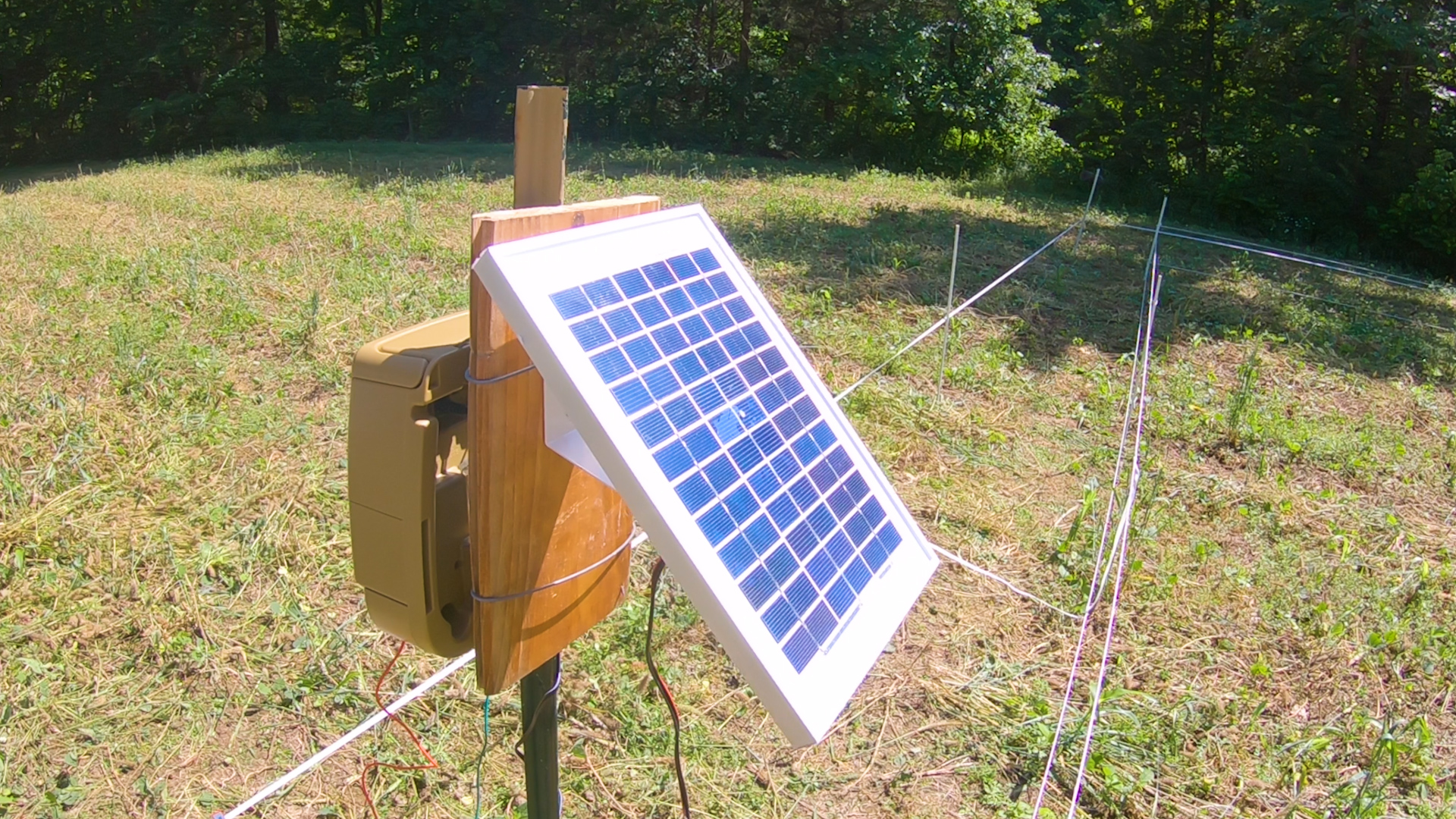
Protecting some or all of the forage in the plot from deer browse until I wish to hunt that area is a great way to create a bottleneck and stand or blind location.
I’ve used this technique for years and am always impressed with the difference in the quantity of food where it’s been protected versus outside the Hot Zone where deer have browsed.
This technique works on 5 or 5,000 acres and is an easy way to pattern deer for trail cameras and/or hunting! To see details on how to protect your own food plots check out this recent episode.
Enjoy Creation,
Grant
A Forecast for Quick Food Plots
The forecast for Thursday included a good chance of rain after lunch. I waited just long enough to see evidence the forecast was likely to be accurate then Tyler, Owen and I went to quickly plant a hidey hole plot using a hand seeder.
The plot we planted was about 1/10th of an acre and extremely rocky! In fact, when most folks see this plot during one of our Field Events they can’t believe anything grows in that rocky soil.
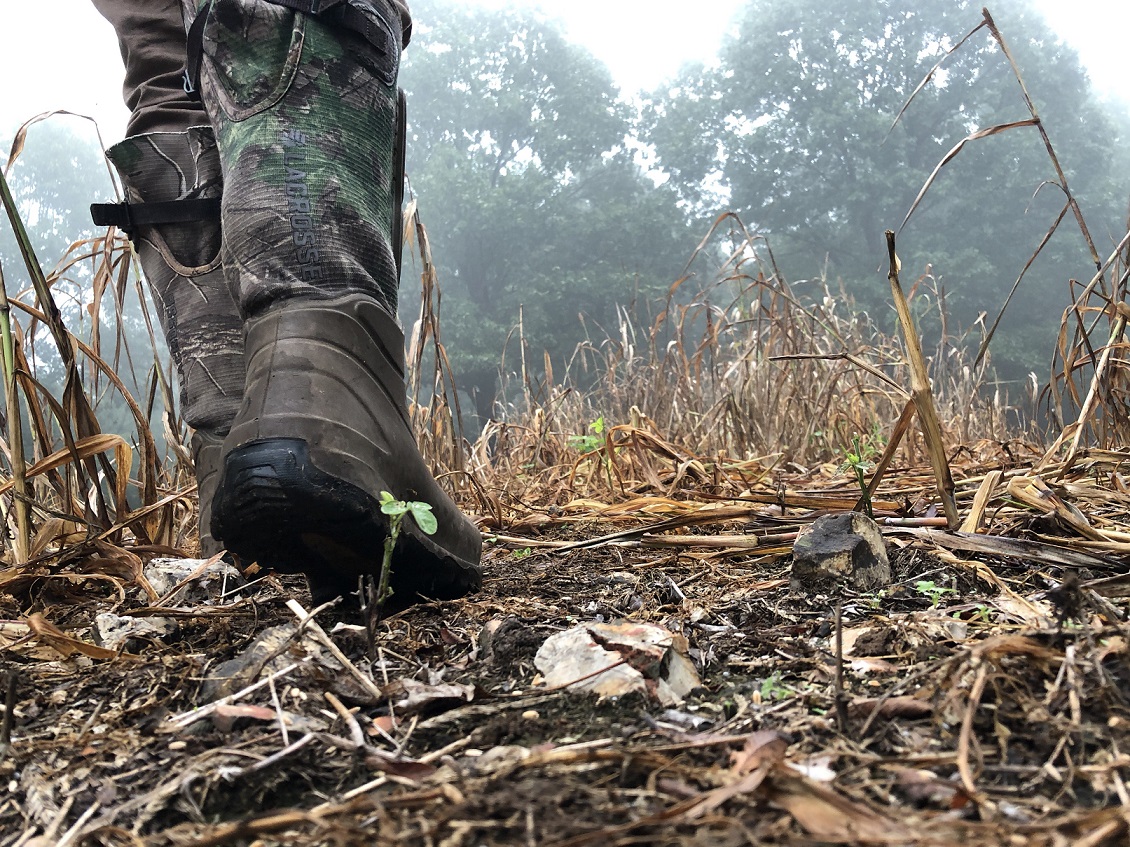
Organic matter is very nutrient rich and does a great job of holding soil moisture. That’s exactly what’s needed to convert this rocky spot into a productive food plot. To further this process, we planted Eagle Seed’s experimental soil builder blend in that plot during July.
July is not the “normal” time to plant crops in this area. However, with the heavy browse pressure on the food plot we had the opportunity to experiment. The purpose of the experimental blend was to not only feed deer, but to add organic matter both above and below the soil’s surface. The biomass above the soil is obvious to anyone looking at the plot. However, most folks don’t consider the roots that will decompose and become quality organic matter below the soil’s surface.
Just because the soil in your food plots doesn’t look like an Iowa crop field, a productive food plot can still be established by using cover crops that are designed to improve the soil quality while providing tons of forage that attract and feed deer.
By the time we arrived at the plot it was just starting to sprinkle with thunder in the distance. With that distant thunder as a motivation, it only took us a few minutes to broadcast Eagle Seed’s Fall Buffalo Blend. I can’t wait to hunt near this plot! For folks that doubt this rocky spot will produce quality forage, stay tuned! We’ll share pictures of this plot in a month or so, and likely film hunts there.
Enjoy Creation,
Grant
Don’t Lose Your Food Plots to Drought: How to Create Drought Resistant Food Plots
A common problem with food plots (any crops) is a lack of soil moisture. All forage crops need adequate soil moisture to produce lots of quality forage. Without moisture plants can’t grow or transfer nutrients. To compound this problem, food plots are often located in areas that don’t have great soils and therefore they don’t hold moisture.
Even if a decent amount of rain occurs, soil moisture can be rapidly lost if the soil is bare. A primary factor of how much moisture is lost is the soil’s surface temperature. Following are some results from recent research about soil moisture loss.
• At 70 degrees soil temperature, 100 percent of the soil moisture is used for plant growth.
• From 95 to 113 degrees, 15 percent of soil moisture is used for plant growth and 85 percent lost through evapotranspiration.
• At 130 degrees, 100 percent of soil moisture is lost through evapotranspiration.
It’s impractical to irrigate most food plots. However, it’s fairly easy to conserve soil moisture. In fact, many farmers in the north central plains are now producing huge yields of corn and soybeans without the expense of irrigating! They do it by simply using shade and wind protection to reduce soil moisture evapotranspiration. These farmers simply ensure that at all times there’s a living crop covering the soil and/or a thick layer of mulch created from the remains of past crops.
They do this by planting blends of cover crops that produce a lot of tonnage sometime during their annual crop rotation. The standing crop shades and usually conserves more soil moisture than it uses. They then plant their cash crop using the previous cover crop remains (biomass/mulch) to take advantage of the soil moisture!
I’ve been using this system to conserve soil moisture in the rocky, drought-prone soils of the Ozark Mountains. This system is actually easier in food plots because deer are used to harvest the crop. Unlike a combine used to harvest a farmer’s crops, deer don’t care if there’s a blend or plants of differing heights.
We experienced a wicked drought at The Proving Grounds this summer. During July we planted an experimental blend developed in partnership with Eagle Seeds. The design of this blend was to provide some quality forage for deer and improve the soil by adding tons of biomass that will be converted to mulch and then high-quality soil. The blend was also designed to shade the soil and conserve the very limited soil moisture.
The experiment was literally a huge success. It provided way more quality browse than a normal drought-stricken plot could and provided tons of biomass. We are now using a Genesis drill to plant Eagle Seeds Fall Buffalo Blend directly into the terminated summer crop.
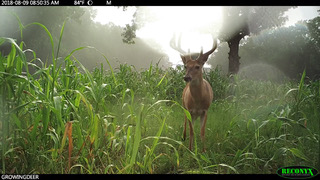
It’s raining now but the forecast calls for the temperatures to return to the 90s with limited chances of rain. The ground cover from the terminated, experimental summer blend (which included seven different crop varieties) will do an excellent job of conserving soil moisture, shading the soil, and providing almost 100% erosion and weed control. This is a very easy win-win-win!
In addition, the decomposing vegetation from the experimental summer blend (which I call the Buffalo Summer Soil Builder Blend) will be very high-quality fertilizer for the fall crop.
Another advantage is the terminated crop is excellent food for earthworms and other beneficial soil life. Gosh – it’s easy to see why I haven’t needed to add any lime or fertilizer in five years and have greatly reduced the amount of herbicide needed!
If you’d like more information about The Buffalo System to produce better forage for less cost, check out this link to videos at GrowingDeer.com.
Enjoy Creation,
Grant
Seven Steps to Better Food Plots
The Proving Grounds has extremely rocky and very poor quality soils with limited nutrients and soil moisture holding capacity. From the very first, I knew that no-till was the best method for planting in these soils. Here on GrowingDeer we’ve shown the changes and development of our food plot program over the years. Better soil is the result of the methods used to build and maintain the food plots.
The program has evolved into what I call the “Buffalo System” because it mimics how the great prairies were built. I’m very confident the Buffalo Food Plot System will improve soil health and produce quality forage anywhere. The Buffalo System has saved me a bunch of money and time. However, just like the results of a diet or fitness program, the results won’t occur overnight.
Here are 7 steps to get started creating better soil and better food plots using the Buffalo System:
- Take a soil test.
- Add soil nutrients as recommended by a soil test analysis.
- Terminate any existing weeds with an herbicide (glyphosate).
- Drill the fall Buffalo Blend from Eagle Seed 45 – 60 days before the first expected frost and when there’s adequate soil moisture or a forecast of rain (80% or more).
- Monitor the crop growth with a utilization cage.
- Next spring when the soil temperature is 50 degrees or higher and there’s adequate soil moisture drill Eagle Seed forage soybeans into the existing fall blend.*
- Terminate the fall crop after the beans are 2 – 4″ tall by using the Goliath crimper or herbicide (depending on presence of weeds).
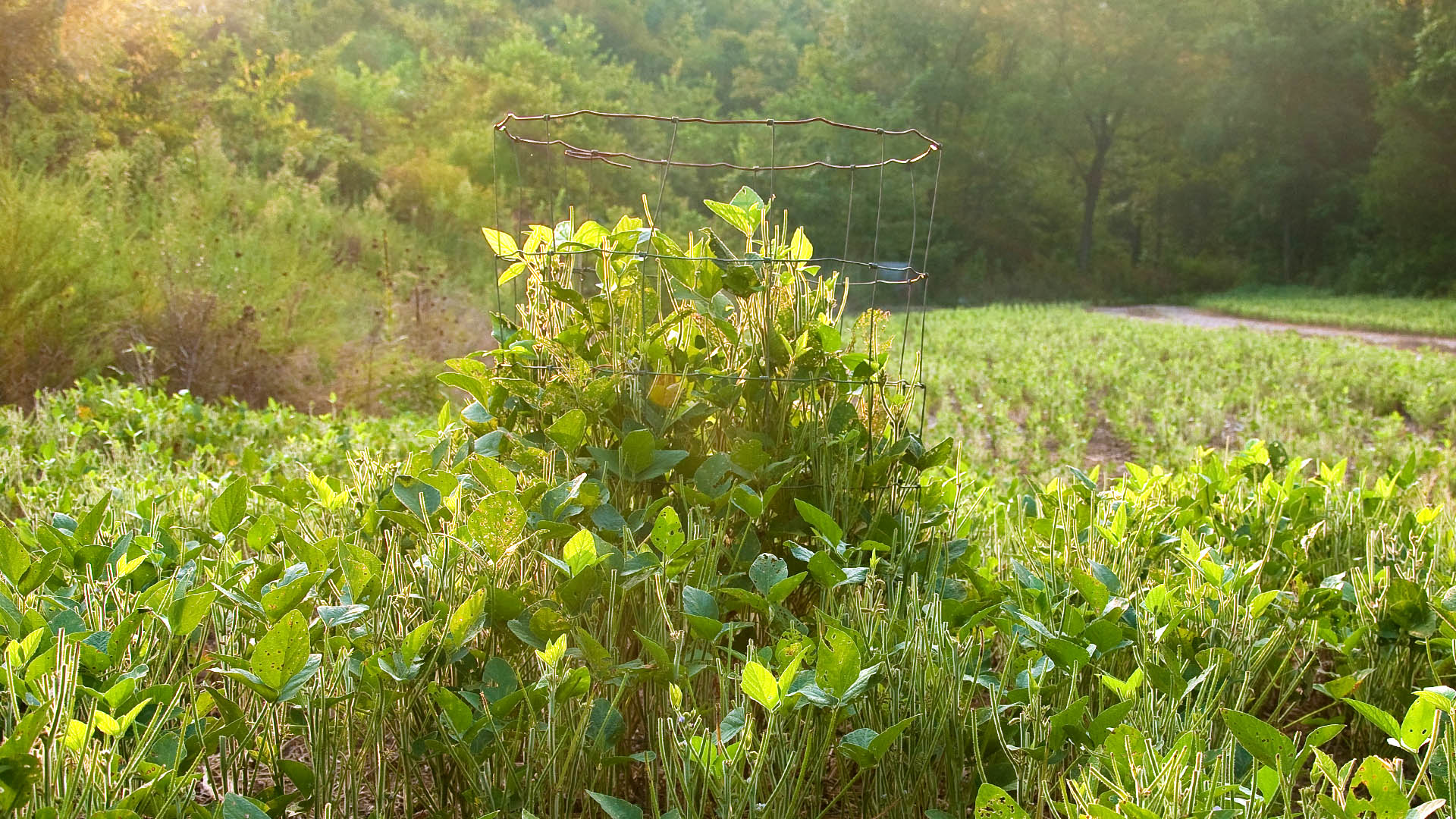
Why do I use this system? It’s because I want the biomass of terminated cover crops for weed control and slow release fertilizer. Earthworms and many other beneficial critters will convert the terminated crop to high quality fertilizer. These soil building critters prosper on year old or older biomass – not the green or fresh biomass that’s just been crimped. Therefore the more years the soil is covered with terminated forage without tillage (or fire) the faster the soil will improve due to significantly increased populations of earthworms and 1,000s of other beneficial critters.
Unless deer consume all the forage, it’s easy to build organic matter causing the plots to hold soil moisture and nutrients much better! Depending on the size of the plot and number of deer using it I plant Eagle Seed’s forage soybeans or their warm season Buffalo Blend during the spring. This rotation has worked extremely well at my place to attract deer and improve the soil quality. During the fall I plant Eagle Seeds Broadside or Fall Buffalo Blend as both are relatively drought resistant and grow in a wide variety of soils.
The Buffalo System isn’t a formula that can be used once and instant results occur. It is a scientifically sound system of forage management that will result in improving the soil’s moisture holding capacity and capturing nutrients from the air and soil. In addition, it attracts and benefits deer and other critters! This is an easy win – win. It absolutely has been a game changer here at The Proving Grounds. Remember, big antlers start in the dirt.
Growing food plots and enjoying Creation,
Grant
*I use a Genesis no-till drill and Goliath Crimper to implement the Buffalo System. These tools have allowed me to save a huge amount of time and expense of lime, fertilizer and herbicide.
Increasing Food Plot Productivity: Upgrading the Buffalo System – Episode #446
New Food Plot Techniques
We are continually learning about and tweaking the Buffalo System. Check out these improvements that increase forage productivity! We also share how Grant planted Tracy’s garden in a food plot, all while building soil and keeping it and crops protected.
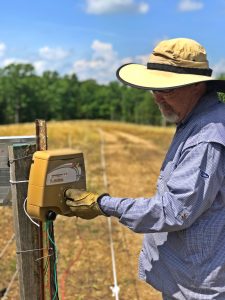 New blog:
New blog:
The Hot Zone allows hunters anywhere to have the fun and success common to those hunting in ag production by protecting soybeans even in a small plot. Read here for tips on designing and maintaining a Hot Zone fence!
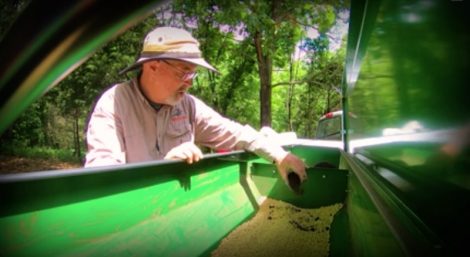 Short VIDEO Clip Of The WEek:
Short VIDEO Clip Of The WEek:
Do you inoculate soybeans? Find out why inoculation is an inexpensive yet key step to planting forage soybeans!
Tip of the Week:
Cleaning your turkey gun after season helps protect the gun during storage. Most importantly, it keeps it ready for the next opening day!
COOL FIND:
We recently spotted this fawn in a food plot! We left it undisturbed, knowing momma would be back. Does will often leave fawns in areas that they feel are safe from predators and will return.
Why Exclude Deer From a Portion of a Food Plot?
For years I’ve used Hot Zone fences to protect some soybeans from being browsed during the growing season. I’m commonly asked, “Why do you plant a food plot only to use a Hot Zone fence to exclude deer?”
The answer is simple: I wish to allow some beans to express their full potential and make as many pods as possible. Beans that are browsed throughout the growing season won’t make as many pods as they could.
Eagle Seed soybean pods are very attractive to deer, especially during the late season when it’s cold. Some food plots are small enough that deer will likely browse every plant during the growing season.
Just excluding deer isn’t the best strategy. With some planning based on the following questions, a hot spot can be created:
• Can the area be approached, hunted, and exited without alerting deer?
• Would it be better to remove the entire exclosure or just one side to create a bottleneck?
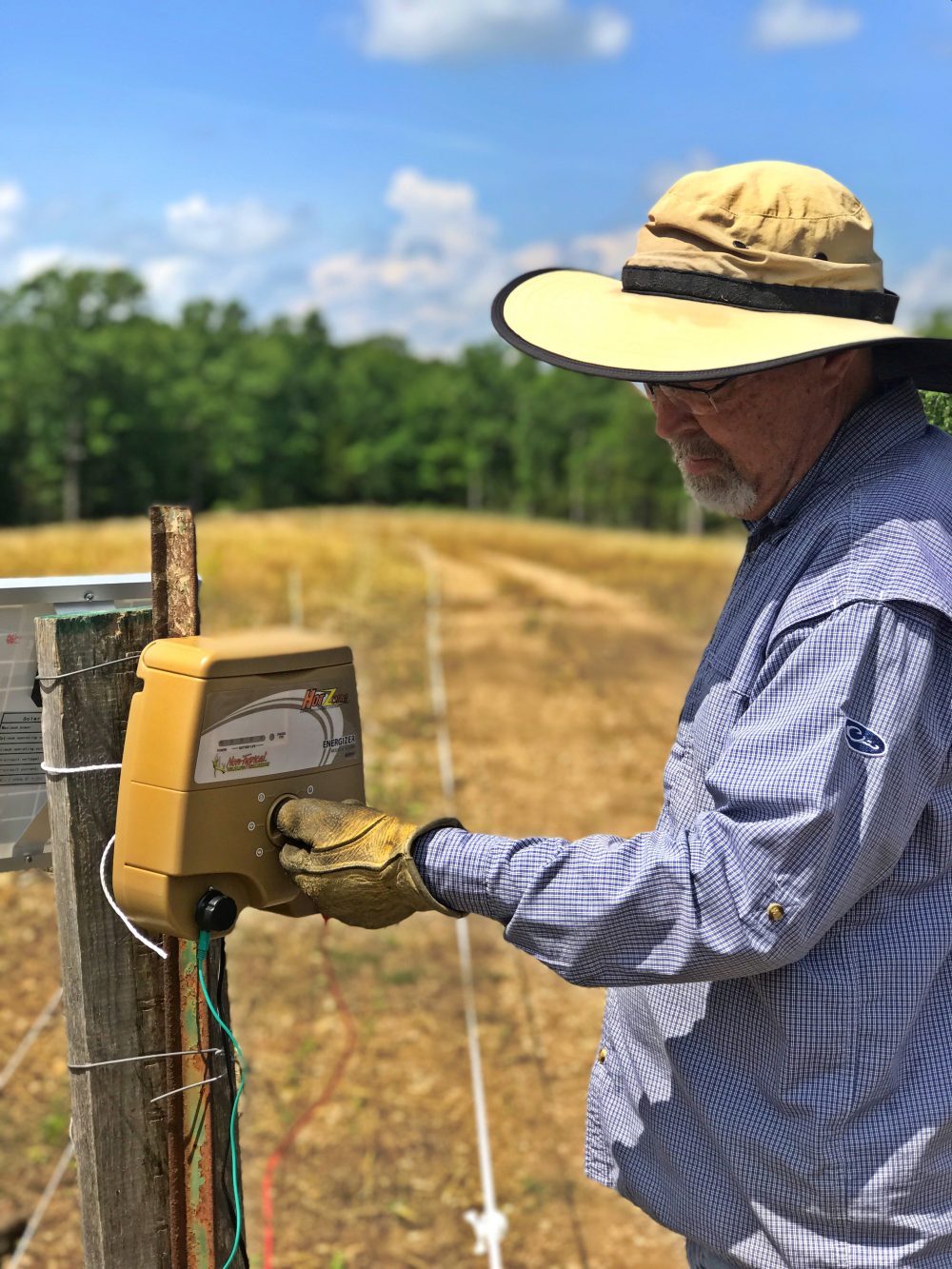
By protecting all or a portion of the soybeans in a plot they will make as many pods as the conditions allow. Then create a gap in the fence or take it down when it’s time to hunt.
Here are some tips for using a Hot Zone:
• Always keep the fence charged! Deer will lose fear of a fence that doesn’t have a charge.
• Weed eat or terminate any vegetation touching the fence to reduce the chances of a short and draining the battery.
The Hot Zone allows hunters anywhere to have the fun and success common to those hunting in ag production by protecting soybeans even in a small plot. It also allows hunters in ag production areas to have standing beans to hunt after the commercial crops have been harvested!
Enjoy Creation,
Grant
Food Plots and Hot, Naked Soil
The daytime temperatures are forecast to be in the 90s much of next week at The Proving Grounds. These high temperatures are tough on critters.
The problems deer experience during warm temperature are compounded when forage is also stressed. The weather can’t be controlled but we can reduce the impacts of stress to forage caused by heat.
Most forage varieties can thrive in high heat if there’s adequate soil moisture. It’s not practical to irrigate most food plots. However, it is possible to manage food plots in a way to conserve the available soil moisture.
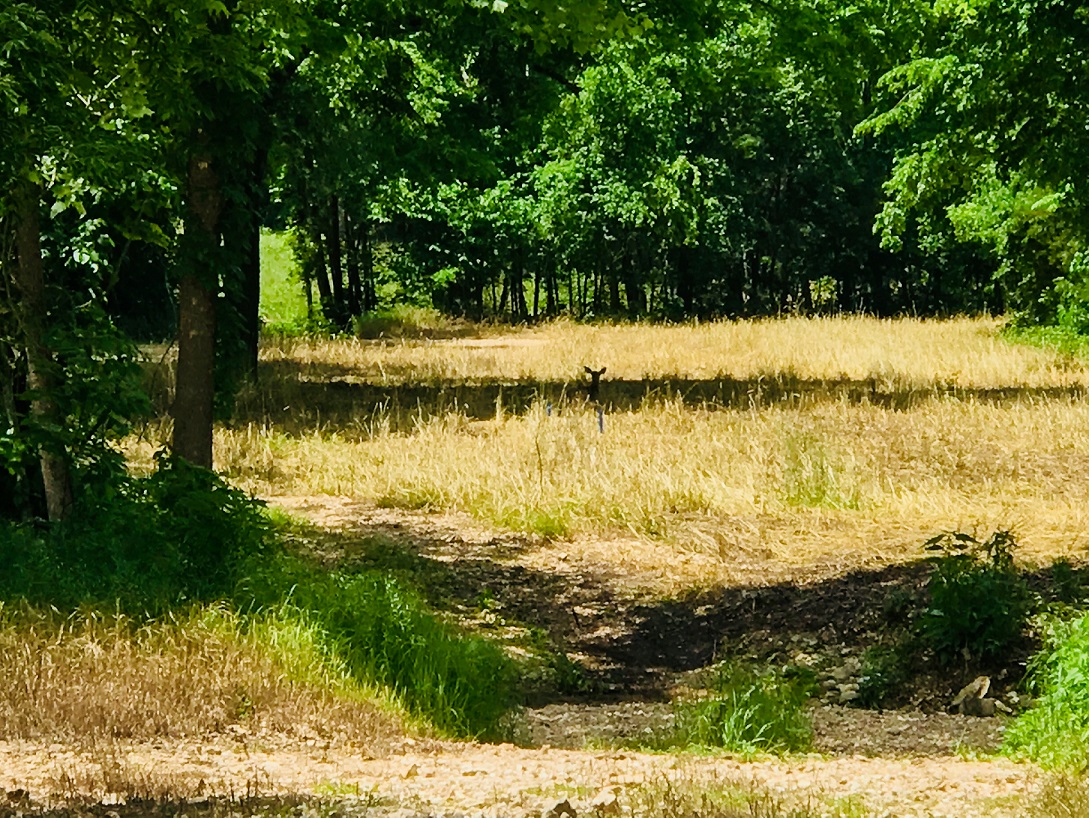
Soil moisture is primarily lost through evaporation and plants lose moisture through transpiration (loss of moisture through pores). Researchers have studied the impacts of heat on soil moisture loss and the numbers are enlightening. The following data is from the NRCS publication at this LINK.
They reported the following for surface soil temperatures:
- At 70 degrees soil temperature, 100 percent of the soil moisture is used for plant growth.
- At 86 degrees, soil microbial activity begins to decline.
- From 95 to 113 degrees, 15 percent of soil moisture is used for plant growth and 85 percent for ET.
- At 113 degrees, soil bacteria start to die.
- At 130 degrees, 100 percent of soil moisture is lost through ET.
- At 140 degrees soil bacteria, the genesis of the soil biology, die.
What’s an easy way to reduce surface temperatures of soil exposed to the sun? Add shade! That’s exactly what we’re doing when we use the Goliath Crimper to terminate crops. The crimped vegetation becomes mulch that shades and reduces the soil’s surface temperature!
You’ve probably raked back some mulch in a garden or a wad of leaves, etc., and noticed there was more moisture there than in soil that was exposed to the sun.
Ensuring the soil is always covered conserves moisture and reduces stress on forage. This results in healthier deer and larger antlers. This is another reason the Buffalo System of forage management produces better crops and cost less than conventional till and bare the soil practices.
I encourage you to consider the benefits of the “Buffalo System”. I’ll be sharing more food plot strategies and techniques in future videos and blogs.
Growing deer, food plots and enjoying Creation,
Grant
Why Worms Are Valuable for Food Plots
Implementing the Buffalo System in food plots allows several natural processes to literally create high-quality soil. One of the most important and productive processes is when the crimped forage decays providing food for earthworms. The more worms in the soil, the quicker the soil is built. Worms not only make soil – they are much better at tilling soil than any mechanical device.
Research indicates that worms “can eat their weight in dirt each day. One acre of soil may contain up to one million worms. Those worms can produce around 700 pounds of castings each day. The castings contain nitrogen and other nutrients essential for plant growth. Worm compost improves soil structure and drainage while increasing nutrients.” Worms also till the soil by mixing layers and creating tunnels, helping air and water reach plant roots.
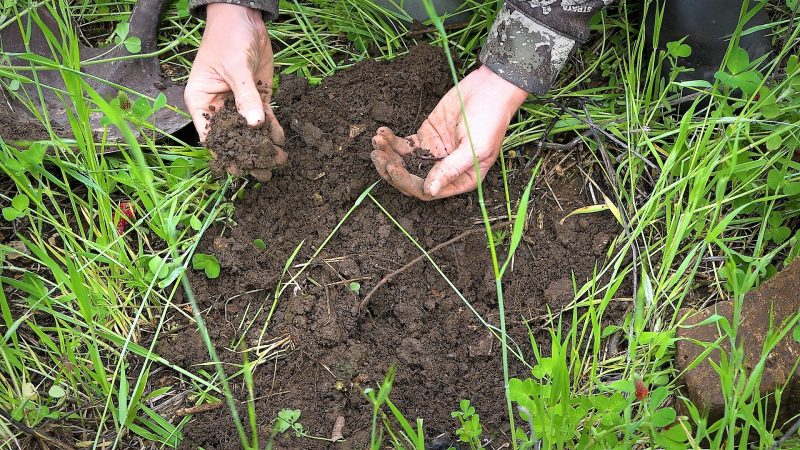
Think on that fact: 700 pounds of castings a day! That’s a valuable addition on many levels! A 5-pound bag of worm castings at a garden center can cost well over $10! Being a worm farmer is financially rewarding! The presence of earthworms are extremely valuable to food plot farmers!
In some respects, establishing food plots using the Buffalo System means that I am now a worm farmer. Monitoring worm populations (see 16:08 in this video) will be an important indicator of how well the soils are developing at The Proving Grounds.
GrowingDeer, food plots, and worms, and enjoying Creation,
Grant
Why the Buffalo Food Plot System?
Years ago the great prairie was always covered with vegetation. The forage there grew as many days throughout the year as possible. In this environment there grew a variety of plants.
Buffalo roamed the prairie. Their herd movements along with wildfire served the regenerative process to build those great soils.
As the North American continent was settled, farmers used European farming methods which included plowing the soil. This practice resulted in soil erosion and compaction. Soil compaction prevents the soil from absorbing water which results in run off and more soil erosion. In addition to inches (or feet in some areas) of soil being lost, so were important nutrients. Farmers developed sophisticated equipment and fertilizers in an effort to compensate for the soil quality reductions caused by these practices.
The Buffalo System is an improved practice that seeks to replicate the natural cycles of the great prairie. I’ve been using them here on The Proving Grounds with a resulting increase in soil fertility and soil actually created.
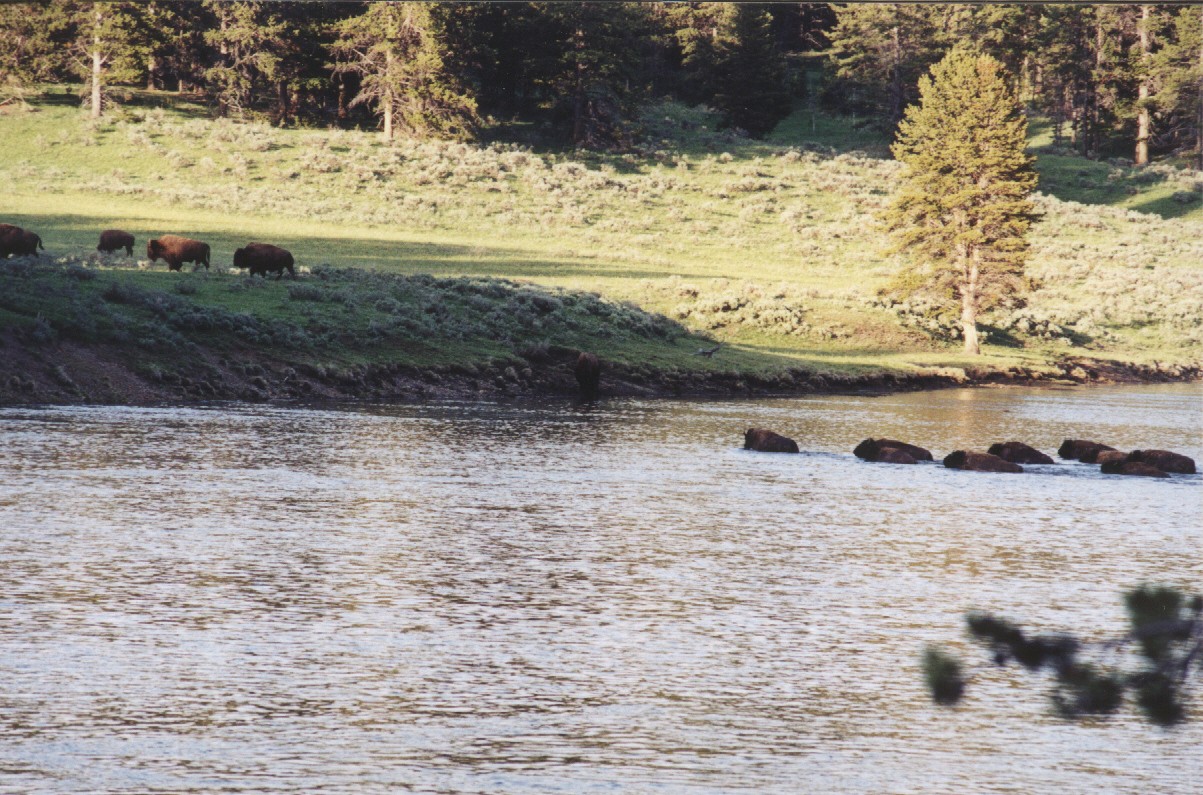
I am a strong advocate for this system of food plot management as the benefits for soil conservation, animal health, and the overall environment are tremendous.
I’ve used a variety of planting methods for food plots over the years. Food plots are a key tool for improving whitetail nutrition and hunting opportunities. GrowingDeer was founded to provide hunters information so that they can have better hunting, bigger antlers. The “Buffalo System” is among, if not the, best technique I’ve found so far to produce better food plots and benefit the soil.
Next week I’ll share another benefit of this improved method for planting and maintaining food plots.
GrowingDeer, food plots and enjoying Creation,
Grant



